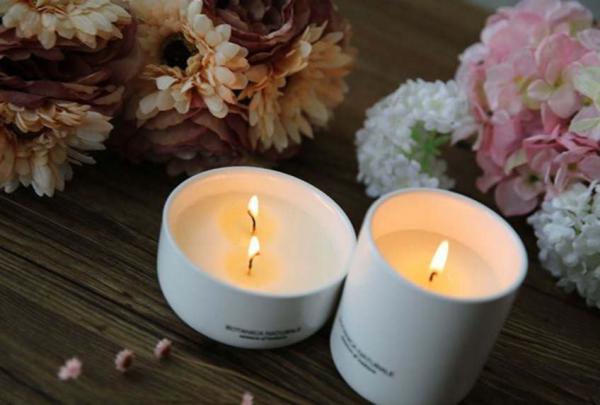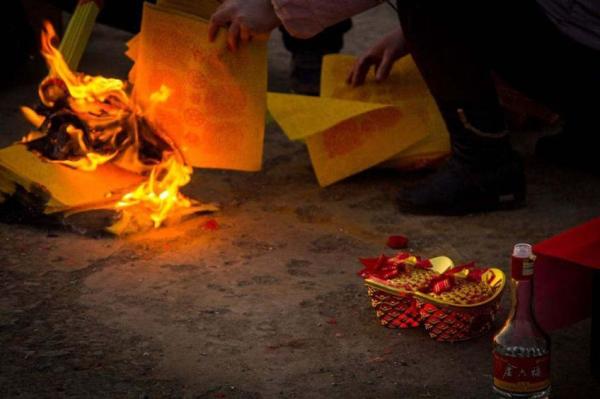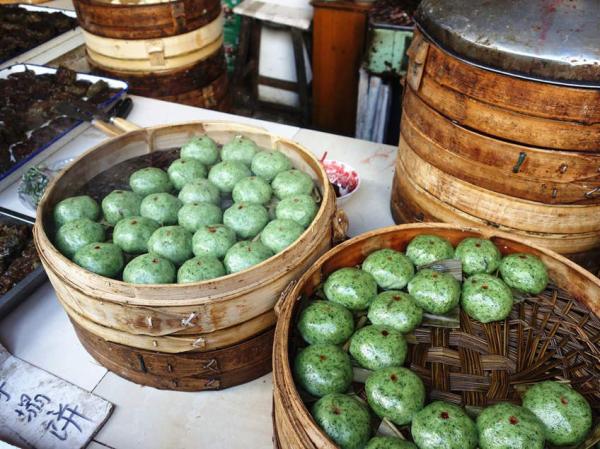The Tomb Sweeping Festival 2026 (Qingming Festival)
The Tomb Sweeping Day is a traditional Chinese festival which always comes at April 4 or April 5. In Chinese it called "Qing Ming Jie" (literally a clear and bright festival, Chinese character: 清明节,pinyin: qīng míng jié), which is also one of 24 solar terms in lunar calendar. It is the high time for spring plowing and sowing as temperature rises higher and rains increase. Similar to the spring festivals of other cultures, Qingming Festival celebrates the rebirth of nature, while marking the beginning of the planting season and other outdoor activities. Sweeping tombs and offering sacrifices to ancestors is an important activity during Qingming Festival, hence it is also the name Tomb Sweeping Festival.
The Qingming Festival, the Spring Festival, the Dragon Boat Festival and the Mid-Autumn Festival are known as the four greatest traditional Chinese festivals. In addition to China, Qingming Festival is also celebrated in some other countries and regions, such as Vietnam, South Korea, Malaysia, Singapore, etc.

Qingming Festival Facts
- In Chinese: 清明节,qīng míng jié
- Other names: Spring Outing Festival (踏青节, tà qīng jié), March Festival (三月节, sān yuè jié), Ancestor Worship Festival (祭祖节, [jì zǔ jié)
- Date: April 4 or 5
- History: 2000+ years
- Importance: It is the most important ancestor worship festival in China. (Another important one is the Ghost Festival)
- Traditions & activities: outings, tomb sweeping, ancestor worship, flying kites, planting trees, cockfighting
When is Tomb Sweeping Festival 2026
| Year | Date | Day | Tomb Sweeping Holiday |
|---|---|---|---|
| 2023 | April 5 | Wednesday | April 5 |
| 2024 | April 4 | Thursday | April 4 |
| 2025 | April 5 | Saturday | April 5 |
| 2026 | April 5 | Sunday | April 5 |
Qingming Festival Origin - Why is Qingming Festival Celebrated?
Qingming Festival, with both natural and cultural connotations, is one of the "24 solar terms" and is also a traditional festival for ancestor worship. The "24 Solar Terms" is the product of ancient farming civilization. The Big Dipper rotates, and when it handles back to Yin, the spring comes again. When the handle of the Big Dipper towards the "second" position due east by south, it is the Qingming solar term. At the Tomb-sweeping Day, all creatures are full of vigorous vitality, while the temperature rises and the whole earth looks clear and bright. it is a good season for outing and tomb sweeping.
The history of Qingming Festival can be traced back to Western Zhou Dynasty over 2, 000 years ago. To celebrate Qingming Festival, People go outdoors for dancing, singing, picnics and kite flying. It was common to color boiled eggs and break them open to symbolize new life. Trees were planted to symbolize the renewing of spring.
Later in the subsequent dynasties, customs and activities like tomb sweeping, swinging and cockfighting were also added.
Qingming Festival Traditions - Tomb sweeping and Ancestor Honoring
With years by, the celebration of life included honoring the past ancestors and offering sacrifices in front of their tombs. Chinese people believed deceased ancestors looked after the family and sacrifice would make them happy resulting in the prosperity of the whole family. Tomb sweeping is a good time to cherish the memory of the dead, to tidy the area around where they are buried and pray. Double satisfaction including visiting dead relatives' grave and going out for a walk at that clean spring time.
According to traditional custom, wine, fruit and food, which the deceased people loved to eat when they were alive. Underworld paper money is burnt as an offering, grave being tied and green branches or flowers placed on the tomb, and the people all bowing down to honor the departed relatives. After the ceremonial aspects, people then eat all the food and show respects to their loved ones before going home.
The Qingming ancestor worship period is very long, usually beginning 10 or 8 days before the Tomb Sweeping Day and lasting 10 days after, so nearly 20 days available to worship ancestors and sweep their tombs.
Sacrifices are not only placed at the graves of Qing Ming Jie, Chinese people regularly provide offerings to their ancestors at altar tables at home, mostly at living rooms. Chicken, eggs, rice, or other dishes are provided. They are carefully arranged with burning incense as to expedite the transfer of nutritious elements to the ancestors.

Other Traditions and Activities of Qingming Festival
Apart from sweeping tombs and offering sacrifices to ancestors, there are also several other traditional activities to celebrate the Tomb Sweeping Day.
Spring Outing
Ever since ancient times, Chinese people have had the custom of going for an outing during the Tomb Sweeping Day, which originated in the ancient spring farming ritual custom. Around the Tomb Sweeping Day, the nature everywhere presents a vibrant scene. Families of old and young went for sweeping tombs whiles they also enjoyed the spring fun on the mountains and in the countryside.
Planting Trees
Around the Qingming Festival, there is plenty of rain and bring sunshine, which increases saplings survival and fast growth. Therefore, there has been the tradition of planting trees during the Qingming Festival, and the festival is also named "Arbor Day" in China.
Flying Kites
Flying kites is a favorite activity during Tomb Sweeping Day. People put kites out not only during the day, but also at night. At night, a string of small colorful lanterns are hung under the kite or on the wind string, which look like twinkling stars and are called "magic lanterns". In the past, some people fly kites in the blue sky, then cut the string, let the breeze send them to the ends of the earth. It is said that this can eliminate diseases and disasters, to bring good luck to people.
Swing
Swing is one of the important customs of Tomb-Sweeping Day in ancient China. In ancient times, swing was made of tree lindera branches, and tied with ribbons. Later, it gradually developed into a swing with two ropes and pedals.
Plant Willow Trees
There are three sources of the custom of planting willows during the Qingming Festival. Some believe that the custom of planting willows was to commemorate the founder of agriculture, Shen Nong, who "taught the people to farm". In some places, people put willow branches under the eaves to forecast the weather. Another saying of the purpose of planting willows in Tomb Sweeping Day is to drive away ghosts and evil spirits.
Cockfight
The game of cockfighting was popular in ancient times during the Tomb-Sweeping Day. The cockfighting began during the Tomb-Sweeping Day and lasted until the Summer Solstice. The earliest record of cockfighting in China can be found in "Zuo Zhuan". In the Tang Dynasty, cockfighting became popular. Not only the folk cockfighting, but also the emperor took part in it. For example, Emperor Tang Xuanzong loved cockfighting most.
Tomb Sweeping Festival in Taiwan, Hong Kong & Macau
■ In Taiwan
For people from Zhangzhou, Taiwan Province, Tomb-Sweeping Day falls on the third day of the third lunar month. Taiwan's Tomb-Sweeping Day customs are similar to those in southern Fujian. Hakka people in Taiwan worship ancestors and sweep tombs from the Lantern Festival to the Tomb-Sweeping Day, which is set by each family.Taiwanese people's tomb sweeping customs, generally can be divided into two kinds: the first one of the general worship – the ceremony and sacrifice are relatively simple, mostly only with some rice cakes; The second one is to repair the ancestral tomb. The ceremony is quite grand, for the offering of the ceremony generally includes a variety of offering gifts, twelve kinds of vegetables and cakes, etc.
■ In Hong Kong
The Qingming customs in Hong Kong and Macao are basically the same as those in Guangdong. Hong Kong people will go to the tomb of their ancestors, burning incense, clearing weeds, and offering fruit, fragrant wine, flowers, roasted pig or white cut chicken, etc.
■ In Macau
Tomb-sweeping Day is a statutory holiday in Macao. Local people who celebrate the festival bring incense and ghost paper, roast meat or a whole suckling pig, fruit, cakes, wine and so on to offer sacrifices to their ancestors.

Qingming Festival Foods
The following are the most popular traditional foods that Chinese people eat during the Tomb Sweeping Festival.
■ Green dumpling (青团子, qīng tuán zǐ)
There is a custom of eating green dumping in the south of the Yangtze River during the Qingming Festival. Green dumplings are made from a wild plant called "wheat straw" that is mashed and squeezed into juice. This juice is then mixed with dried water and pure glutinous rice flour, and then the dough is made. The filling is made of fine sweet bean paste with a small piece of sugar lard. After the pellet is made, they will be steamed into the cage. After taken out of the cage brush the the surface of balls with cooked oil.
■ Qingming glutinous rice (清明糯米饭,qīng míng nuò mǐ fàn)
On the eve of tomb-sweeping day, many families will collect a variety of herbs from the wild to make Qingming Glutinous rice. Commonly used herbs are mugwort, hemp leaf, shepherd's purse, medlar leaf, etc. In the places inhabited by Buyi and zhuang in Guangxi, Yunnan and Guizhou, people dye the rice with violet vine, yellow flower, maple leaf into colorful glutinous rice for Qingming Festival.
■ Ai Ban (艾粄, ài bǎn)
Hakka people have an old saying that eating Ai Ban around Tomb Sweeping Day can keep people from getting sick all year round. Ai Ban is a traditional dish necessary for Hakka people on Tomb Sweeping Day.
■ San Zi (deep-fried dough twist, 馓子, sǎn zi)
It is a tradition to eat Sanzi on Tomb Sweeping Day in China. Sanzi is a kind of fried food, which is crispy and delicate. It was called "cold food" in ancient times. Northern Chinese Sanzi is made of wheat flour, while Southern Chinese Sanzi is delicate with rice and flour as its material.
■ Egg
Chinese folk custom believes that eating an egg on Tomb Sweeping Day will keep you healthy for the whole year. In addition to eating eggs on Tomb-Sweeping Day, people also have fun games with eggs. There are two kinds of egg games, one is "painted eggs", and the other is "carved eggs". Painted colorful eggs can be eaten, but the carved eggs are for enjoyment only.
■ Leaf mustard rice (芥菜饭, jiè cài fàn)
During the Tomb Sweeping Festival, regardless of urban and rural areas in eastern Fujian Province, local people mostly eating leaf mustard foods.
Qingming Festival Taboos for Tomb-sweeping in China
1. Avoid wearing colorful clothes
To respect the dead, tomb sweepers should be dressed gravely. Generally speaking, dark clothes should be worn when sweeping the grave. It is better not to wear red and purple clothes, and clothes should be neatly dressed
2. Avoid laughing, joking and criticism of ancestors
Laughing and joking is not only disrespectful to the deceased, it also attracts criticism. Commenting on someone else's grave is kind of sacrilege and can lead to trouble.
3. Pregnant women are advised not to visit the grave
Most of the cemeteries are built on higher ground, and crowded with tomb sweepers during the Tomb-sweeping Festival. Besides, many people will burn money paper, set off firecrackers, make the air around is not very good, which is not conducive to the health of pregnant women.
4. Don't take pictures in the cemetery
It is suggested not take photos when sweeping a grave, whether it is the grave sweepers taking photos or the grave sweepers taking photos with the graveyard. When visiting the grave of the loved ones, one should concentrate.
5. Tomb-sweeping time
It can be done as long as it is during Tomb Sweeping Day. But it is best to finish it before 3pm.

Chinese Culture & Qing Ming
Qingming was frequently mentioned in ancient Chinese works, the most famous one is the poem by Du Mu, "A drizzling rain falls like tears on the Mourning Day; the mourner's heart is breaking on his way. Where can a wine house are found to drown his sadness? A cowherd points to Almond Flower (Xing Hua) Village in the distance.
Qingming Festival by the Riverside Painting is another cultural masterpiece about Qingming Jie. It is one of the top ten famous ancient Chinese paintings, painted by Zhang Zeduan of the Northern Song Dynasty, and now stored in the Palace Museum in Beijing. This Qingming scroll is 24.8 cm wide and 528.7 cm long, vividly recording the living conditions of people of all social classes of Dongjing (also called Bianjing, today's Kaifeng in Henan Province), the capital of the Northern Song Dynasty in the 12th century of China.
Qingming is also significant in Chinese Tea Culture since it is the specific day which dividing the fresh green tea by their picking dates. The premium early season is known as "Pre-Qingming" (mingqian in Chinese). Green tea picked before Qingming are of higher value and price, as the short production cycle and required experienced workers. The famous type was Yu Qian Long Jing (Dragon Well before the Rain), only have 10-day long to pick and of much lighter and subtler aromas than those picked after the festival.


